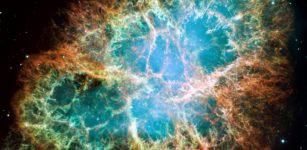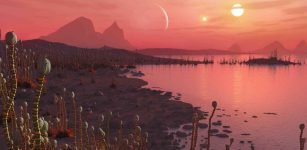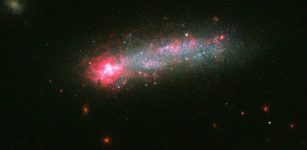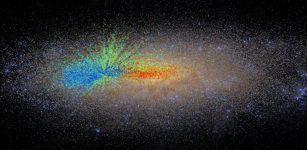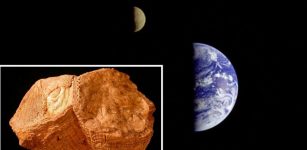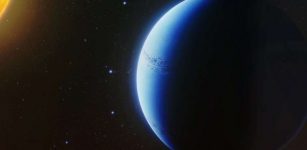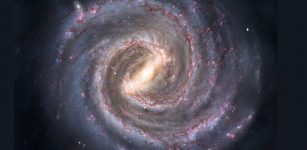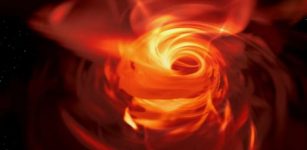There Is Sugar In That Star! Life Building Blocks Discovered Around A Sun-Like Star
MessageToeagle.com – Astronomers found molecules of glycolaldehyde, a simple form of sugarin the gas surrounding a young binary star, with similar mass to the Sun, called IRAS 16293-2422.
Glycolaldehyde has been seen in interstellar space before. but this is the first time it has been found so near to a Sun-like star, at distances comparable to the distance of Uranus from the Sun in the Solar System. The discovery was made by scientists using the Atacama Large Millimeter/submillimeter Array (ALMA).
“In the disc of gas and dust surrounding this newly formed star, we found glycolaldehyde, which is a simple form of sugar, not much different to the sugar we put in coffee,” explains team leader Jes Jørgensen from Niels Bohr Institute, Denmark.
“This molecule is one of the ingredients in the formation of RNA, which – like DNA, to which it is related – is one of the building blocks of life.”
“What it is really exciting about our findings is that the ALMA observations reveal that the sugar molecules are falling in towards one of the stars of the system,” says Cécile Favre from the Aarhus University, Denmark.
“The sugar molecules are not only in the right place to find their way onto a planet, but they are also going in the right direction.”
The gas and dust clouds that collapse to form new stars are extremely cold and many gases solidify as ice on the particles of dust where they then bond together and form more complex molecules.
But once a star has been formed in the middle of a rotating cloud of gas and dust, it heats the inner parts of the cloud to around room temperature, evaporating the chemically complex molecules, and forming gases that emit their characteristic radiation as radio waves that can be mapped using powerful radio telescopes such as ALMA.
IRAS 16293-2422 is located around 400 light-years away, comparatively close to Earth, which makes it an excellent target for astronomers studying the molecules and chemistry around young stars.
This image shows the Rho Ophiuchi star-forming region in infrared light, as seen by NASA’s Wide-field Infrared Explorer (WISE). IRAS 16293-2422 is the red object in the centre of the small square. The inset image is an artist’s impression of glycolaldehyde molecules, showing glycolaldehyde’s molecular structure (C2H4O2). Carbon atoms are shown as grey, oxygen atoms as red, and hydrogen atoms as white.
By harnessing the power of a new generation of telescopes such as ALMA, astronomers now have the opportunity to study fine details within the gas and dust clouds that are forming planetary systems.
“A big question is: how complex can these molecules become before they are incorporated into new planets? This could tell us something about how life might arise elsewhere, and ALMA observations are going to be vital to unravel this mystery,” concludes Jes Jørgensen.
MessageToEagle.com


